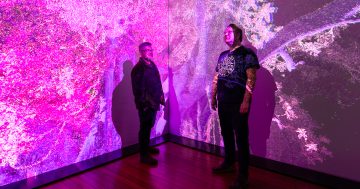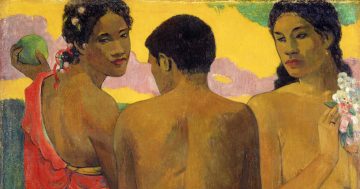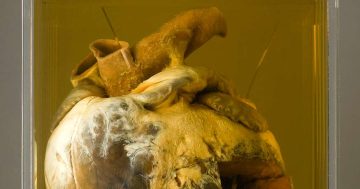Canberrans can learn more about the Honeysuckle Creek Tracking Station at the National Archives of Australia’s Out of This World exhibition, which covers space exploration in Australia from the 1950s to the 1970s. Photo: National Archives of Australia.
From broadcasting the first moon landing in 1969 across the world from Honeysuckle Creek to constructing three space-tracking stations right here in the ACT, Australia’s contribution to space research has been out of this world.
Now Canberrans will be able to re-live decades’ worth of Australia’s space exploration through research, photos and stories that have been put on display at the National Archives of Australia’s (NAA) headquarters in Parkes (that’s the Canberra suburb of Parkes, not the NSW country town with the dish).
Covering the exciting days of space exploration throughout the 1950s, 1960s and 1970s, the Out of This World: Australia in the Space Age exhibition tells a diverse range of stories from a curious nation’s desire to understand space.
The exhibition features something for everyone, from cutting-edge scientific research to space-age toys, design, television and even a meet-and-greet with ‘the man from the moon’, Mr Squiggle.
For 40 years, Mr Squiggle flew to Earth from the moon on his rocket to entertain the children of this world on the ABC television program of the same name.
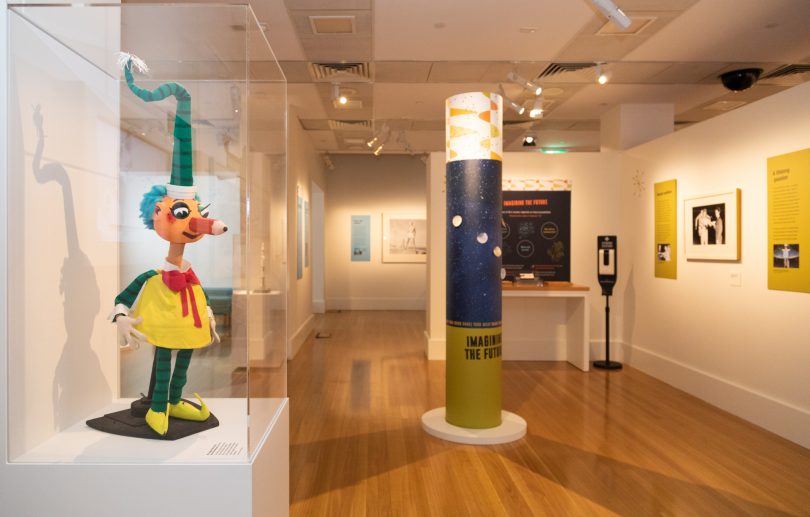
Mr Squiggle is making an appearance at the National Archives of Australia’s Out of This World exhibition. Photo: Michelle Kroll.
Four tiny moon rocks, collected by Apollo 11 astronauts Neil Armstrong and Buzz Aldrin during their historic moonwalk in July 1969, have also made the descent to Canberra to be part of the exhibition.
Australian astronauts Andy Thomas, Nik Halik and Philip Chapman might not be as recognisable as Armstrong and Aldrin, however Australians now have the chance to see how our nation and its neighbours contributed to space exploration throughout the 20th century.
“Out of This World offers visitors to the National Archives a wealth of inspiring stories about everyday Australians doing extraordinary things during the space age,” says exhibition curator Catriona Donnelly.
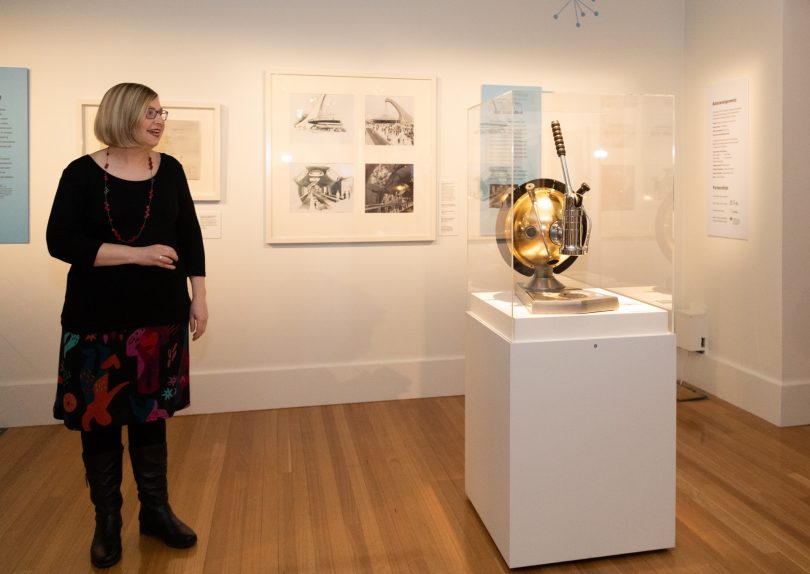
Exhibition curator Catriona Donnelly says there is a wealth of inspiring stories from Australians during the space age. Photo: Michelle Kroll.
“These stories illustrate the nation’s enthusiastic response to space exploration and its commitment to international collaboration. They also reveal its citizens’ lasting curiosity about the universe.”
Out of This World will be on show at the National Archives of Australia in Canberra until 14 March, 2021, before it then tours nationally. Admission is free. Visit here for more information.
Original Article published by Dominic Giannini on The RiotACT.


